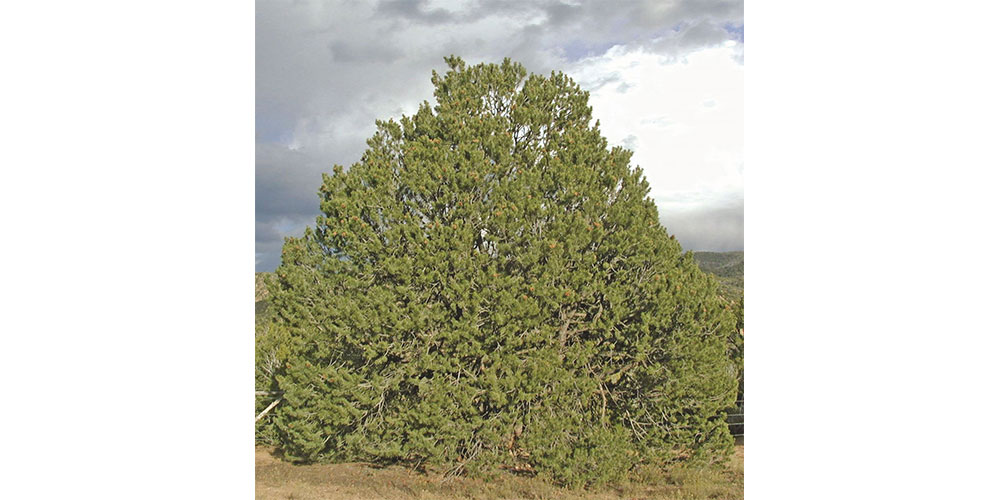
Few plants or animals are more ingrained in the culture and biology of New Mexico than the Piñon Pine (Pinus edulis). It is also sometimes called Two Needle Piñon. The species is found mostly in New Mexico, Colorado, Utah, and Arizona with small populations in some of the adjacent states. The species grows very slowly, often in more dry habitats in the mountains at an elevation of 4,500 up to about 8,000 feet. The adult trees are usually within 15-35 feet tall. The round to ovate cones are distinctive. The New Mexico Federation of Women’s Clubs was asked to select the State Tree and the Piñon Pine proved to be their favorite. On March 16, 1949, the State Legislature officially adopted the Piñon Pine as the State Tree. Seeds (pine nuts) of the plant were collected by Native Americans for centuries. This was noted by the first Spanish settlers arriving in the 1600’s, Every few years Piñon Pine will produce a bumper crop of nuts which are gathered by people, and eaten by birds, bears and other wildlife. Jays, especially Piñon Jays depend heavily on nuts of this plant and even help to spread the plant by caching deposits of seeds. Piñon wood warms New Mexicans across the state and give off a distinctive and very pleasant incense smell. In recent years many Piñon Pines across the state have died off because of drying and warming conditions which have made them more vulnerable to bark beetles. Global warming will only make their recovery more difficult.
